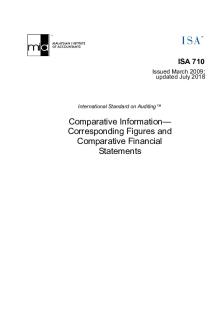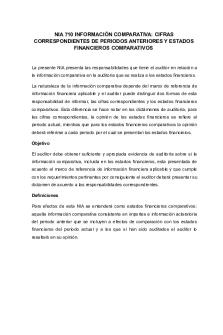Law Assignment 1 - 7/10 PDF

| Title | Law Assignment 1 - 7/10 |
|---|---|
| Author | Hương Mai |
| Course | Introduction to Business Law |
| Institution | Swinburne University of Technology |
| Pages | 4 |
| File Size | 126.9 KB |
| File Type | |
| Total Downloads | 20 |
| Total Views | 128 |
Summary
7/10
...
Description
Mai Huong Ngo Student ID: 102649858
LAW10004 Assignment 1
The doctrine of precedent plays a fundamental role in Australia common law legal system. This principle points out that when making a judicial decision on a case, the judge must follow the decisions that were made by judges in higher courts within the same court hierarchy if similar facts or details are issued. One of the most essential traits of the doctrine, which remains controversial, is it ‘limits the freedom of judges to make law’. I am myself believed that, as Professor Harding (2013) asserts that: “The moral value of the doctrine of precedent is in the way it serves the political ideal of the rule of law”1, this characteristic helps in maintaining the consistency in the contemporary legal system. Also, the limitation mentioned in the statement is kept at a moderate level for judges to apply, reject or overrule the previous precedents due to particular cases. The limited freedom of judges to make law has not only ensured the consistency of the body of law but also made the law continuously predictable. To be more precise, by identifying the similar situations and facts in precedents, similar judicial decisions are made by judges, which contribute to the notion of fairness and justice. Take the case Grant v Australian Knitting Mills [1936] for example. It is known as one of the most typical case for negligence law in Australia. In 1931, Dr Grant purchased two pairs of woollen underwear and two singlets from John Martin & Co. Grant then suffer a severe dermatitis due to the leftover chemical irritant in these undergarments. The case was opened for Grant in order to accuse the manufacturer – Australian Knitting Mills of the negligence in taking reasonable care of their products, causing injury to customer’s health. The Supreme Court of Southern Australia has identified the similar situation in the case Donoghue v Stevenson [1932]. In this case, the plaintiff Donoghue took legal action against Stevenson after her friend brought her a ginger beer bottle manufactured by the defendant. She found the remains of a decomposed snail in
Mai Huong Ngo Student ID: 102649858
it, making her suffer mental shock and severe gastro enteritis. The House of Lords decided that although there was no contract between them, Stevenson still owed a duty of care to Donoghue who used his product. In Grant case, the Court took Donoghue case as a precedent to follow and brought out the judgement that the manufacturer Australian Knitting Mills was liable. The precedent restricts the freedom of making law; however, it provides adequate information and materials for the judge to quickly apply the relevant law in such situation. This helps the legal system to develop in a consistent way. Theoretically, “only the legislature makes law”. Judges are also restricted of making new laws with binding precedents. It is reasonable for some people to share the disagreement with this characteristic of the doctrine as its disadvantages do exist in the legal system. Several precedents are becoming meaningless, unsuitable for the current enforcement while the society and its moral values keep growing and changing. Judges is tied to follow these outdated precedents as the previous judicial decisions can only be rejected or overruled by the courts at the same level or higher within the same court hierarchy. Yet, the doctrine of precedent is flexible. By distinguishing the material facts between relevant cases, judges are able to reject the binding precedents. What is more, judges in the same or higher level of court within the court hierarchy has the ability to overrule a precedent. In many situations, judges do implement new legal rules due to the lack of relevant legislation or precedent. Decision made in the case Imbree v McNeilly [2008] has shown an example of overruling a precedent. In this case, the defendant is a16 year-old inexperienced driver, who has just obtained a learner’s permit. The accident happened when the defendant was driving under the “supervision” of the plaintiff, who was a front seat passenger. The plaintiff then suffered spinal injuries. The same situation seemed to happen in the case Cook v Cook [1986], as the defendant, “even without a learner’s permit”, is told to drive her car by her family members, including the plaintiff, and then crashed a telephone pole. The plaintiff was awarded
Mai Huong Ngo Student ID: 102649858
damages, but it was decreased by 70% due to her contributory negligence, as “ a person instructing a learner driver was owed a duty of care the standard being that of a reasonable learner driver” (Amanda, 2008). Prior to Imbree case, this decision was taken as a precedent that, within the plaintiff’s knowledge of the defendant’s lack of driving skill but let her/him drove anyway, the defendant could argued that the error was made in driving is not a negligence. In Imbree case, the majority of High Court agreed that the precedent from Cook v Cook was no longer a good law that should be followed. They explained that the principle in the previous case “achieved no useful result” and held that the defendant, as an inexperience driver, was judged with the duty of care as a reasonable driver, as an experience driver would make the same error within the situation. In conclusion, the previous precedent, which had existed for over 20 years, was overruled. That the doctrine of precedent limit the freedom of judge to make law, on the one hand makes it more convenient for judges to identified and apply law in a systematic way, thus, contribute to the consistency and justice of the contemporary legal system. On the other hand, judges are still able to reject, even overrule a precedent that is no longer suitable and meets the expectation and moral values of society. Bibliography 1. Matthew Harding, The High Court and the Doctrine of Precedent (18 July 2013)
Opinions on High 2. Matthew Harding and Ian Malkin, Overruling in the High Court of Australia in Common
Law Cases (2010) AustLII
Mai Huong Ngo Student ID: 102649858 3. Grant v Australian Knitting Mills (1933) 50 CRL 387
4. Donoghue v Stevenson [1932] AC 562 5. Imbree v McNeilly [2008] HCA 40 6. Cook v Cook (1986) CLR 367...
Similar Free PDFs

Contract Law - 1 Assignment
- 7 Pages

Property law assignment 1
- 16 Pages

Criminal Law assignment 1
- 5 Pages

Company law assignment 1
- 9 Pages

Commercial Law Assignment 1
- 8 Pages

Law bias - Assignment 1
- 13 Pages

Sources of Law 1 - Assignment
- 13 Pages

Assignment 1 - College of law
- 6 Pages

Law Assignment 1 - 7/10
- 4 Pages

Ideal gas law assignment 1
- 4 Pages

LAW - assignment
- 4 Pages

Law Assignment
- 6 Pages

Standard Auditing 710
- 19 Pages

ISA 710 - Lecture notes 3
- 19 Pages

Assignment Law 299 business law
- 7 Pages

Ensayo NIA 710 Y 720 del IMCP
- 12 Pages
Popular Institutions
- Tinajero National High School - Annex
- Politeknik Caltex Riau
- Yokohama City University
- SGT University
- University of Al-Qadisiyah
- Divine Word College of Vigan
- Techniek College Rotterdam
- Universidade de Santiago
- Universiti Teknologi MARA Cawangan Johor Kampus Pasir Gudang
- Poltekkes Kemenkes Yogyakarta
- Baguio City National High School
- Colegio san marcos
- preparatoria uno
- Centro de Bachillerato Tecnológico Industrial y de Servicios No. 107
- Dalian Maritime University
- Quang Trung Secondary School
- Colegio Tecnológico en Informática
- Corporación Regional de Educación Superior
- Grupo CEDVA
- Dar Al Uloom University
- Centro de Estudios Preuniversitarios de la Universidad Nacional de Ingeniería
- 上智大学
- Aakash International School, Nuna Majara
- San Felipe Neri Catholic School
- Kang Chiao International School - New Taipei City
- Misamis Occidental National High School
- Institución Educativa Escuela Normal Juan Ladrilleros
- Kolehiyo ng Pantukan
- Batanes State College
- Instituto Continental
- Sekolah Menengah Kejuruan Kesehatan Kaltara (Tarakan)
- Colegio de La Inmaculada Concepcion - Cebu